A guide to Alexandra Pirici’s Aggregate - Art Basel’s public art project
Everything you need to know about the Romanian artist’s performative environment on Messeplatz
Log in and subscribe to receive Art Basel Stories directly in your inbox.
Performative environment
Messeplatz
Aggregate is on view:
Tuesday June 11, 5pm to 9pm
Wednesday June 12, 5pm to 9pm
Thursday June 13, 4pm to 8pm
Friday June 14, 4pm to 8pm
Saturday June 15, 1pm-5pm
Art Basel is pleased to present Aggregate (2017 – 2019), a performative environment created by the Romanian artist Alexandra Pirici, and curated by Cecilia Alemani for Messeplatz Basel. Known for staging complex actions, gestures and live choreographies, Pirici explores structures of power and symbolic manifestations of history, alongside individual and collective notions of bodily presence. In her performative pieces she often stages ensembles in which actors and dancers represent historical events and ‘rematerialize’ both well and lesser known artworks, compositions which range from minimal actions to vast, living landscapes combining dance, choreography, sculpture, performance, and digital technology.
For this new iteration of Aggregate, Alexandra Pirici brings over 60 performers together, forming a vast collective body through the accumulation of individual gestures, enveloping its audience in intricate choreographies and rehearsed compositions. By using gestures and sounds which are taken from both natural and popular media sources, Pirici renders disparate forms of heritage and cultural memory, conceiving Aggregate as a time capsule in which fragments of vernacular culture, art history, and everyday life are given new, living embodiments.
As viewers walk around this performative landscape, the dancers and actors mix seamlessly with the audience. While they follow a defined, algorithmic framework, the dancers make impromptu choices as to how they combine individual elements from a vast selection of choreographic materials. These include excerpts from pop songs such as Depeche Mode’s Enjoy the Silence (1990), staged movements evoking historic artistic masterpieces such as Michelangelo’s David (c.1504) and Wifredo Lam’s Lisa Mona (1950), popular references to Bollywood movies, and hand signals from the Occupy movement. The choreography is further punctuated by poetry recitals, with selections from Forough Farrokhzad, Gil Scott-Heron and Simone Yoyotte, as well as Romanian folk music by Maria Tănase.
By identifying and highlighting fragments of our collective consciousness, Aggregate invites its viewers to reflect on how identities are constructed and performed, and how collectivity is built through the selective recollection, replication, and hybridization of knowledge. Thus, Pirici urges us to confront our commonalities and envision society itself as a subjective, living body of shared memories and behaviors.
The latest edition of Aggregate at Art Basel 2019 is staged on Messeplatz, in a newly-designed temporary pavilion conceived by Andrei Dinu, a frequent collaborator of Pirici's. Inspired by both medical isolation spaces and American architect Buckminster Fuller’s geodesic domes, the temporary pavilion is constructed as an air-supported structure, its shape defined by soft, organic lines that contrast with the geometric, grid-like environment of Messeplatz itself. The flexible and translucent surface of the pavilion acts as a protective membrane – or shell – that pulsates with the energy of the performers and the space surrounding it.
Aggregate was first presented at the Neuer Berliner Kunstverein in 2017, and in September 2018 it was featured as part of ‘Hopscotch’ (Rayuela)’ in the first edition of the Art Basel Cities week in Buenos Aires, which was also curated by Cecilia Alemani.
Performers in Basel:
Rachida Aharrat, Anik Auer, Alina Belyagina, Andrea Berchtold, Sophie Bertschy, Eva Borrmann, Laura Boudou, Jules Boutet, Kai Brügge, Katarzyna Brzezinska, Laura Burgener, Carmelangela Damico, Alice D’Angelo, Maayan Danoch, Anna Degen, Seraina Dejaco, Carla Doorn, Lucie Eidenbenz, Farid Fairuz, Angela Galmarini, Sophie Garnier, Sebastian Gisi, Jessica Haener, Sarah Hammond, Sandra Hanschitz, Jenna Hendry, Xiao Huang, Muhammed Kaltuk, Peter Kato, Daouda Keita, Sandra Klimek, Julia Klockow, Kathrin Knoepfle, Jasmina Križaj, Benjamin Alexander Lindh Medin, Jan Lorys, Jared Marks, Tom Middleton, Larbi Namouchi, Mara Natterer, Carina Neumer, Steve Paulet, Elton Petri, Thanh Pham, Rafał Pierzyński, Davide Pillera, Romana Ramer, Maja Renn, Dominique-Riccarda Sakotic, Sarah Schoch, Silke Schuster, Yunjin Song, Carl Staaf, Petra Stillhart, Pauline Stöhr, Carola Dorothee Stutz, Benjamin Sunarjo, Zina Vaessen, Lisa Vilret, Aurore Vincent, Julian Voneschen, Rebecca Weingartner
Special thanks to Bjorn Alfers, Georg Faulhaber, Robias Meyer, Fidel Stadelmann, and Anna Weissheimer.
Full list of references used for this ongoing performative action:
Tigers, gorillas, antelopes
Ocean-floor eels colony
Bird song (the extinct Huia - Heteralocha acutirostris)
Prometheus tree (Bristlecone Pine - Pinus longaeva)
Mangrove trees
Cave of the Crystals in Naica, Chihuahua, Mexico
Sound of waves
Climbing plants
Internet infrastructure sounds (data center)
‘Occupy’ movement hand signals
Cumbia dance on ‘El Baile de la Cocotera’ by Karina Crucet
Leonardo da Vinci: ‘Mona Lisa’
Wifredo Lam: ‘Lisa Mona’
Michelangelo: ‘David’
Gqom rhythm
Wooden Bodhisattva from Shanghai
Egyptian Seated Scribes
Antonio Canova: ‘Psyche Revived by Love’s Kiss’
Constantin Brancusi: ‘The Table of Silence’
Maria Tanase: song excerpt – ‘Pana cand nu te iubeam [Until I fell in love with you]’
Rihanna: song excerpt– ‘Kiss it better‘
Forough Farrokhzad: poem excerpt – “I feel sorry for the garden”
Chola bronze statue of Nataraja
Simone Yoyotte: poem excerpt – ‘Pyjama-vitesse’
Depeche Mode: song excerpt – ‘Enjoy the Silence’
Charlotte Rudolph: ‘Hands of Mary Wigman’
Fyodor Lopukhov: ballet still – ‘Bolt’
Kenji Kawai: song excerpt – ‘Making of a Cyborg’
Pablo Neruda: ‘Keeping Quiet’
Camille Claudel: ‘Sakountala’
Unknown artist, Gian Lorenzo Bernini: ‘Sleeping Hermaphroditus’
Bollywood film excerpt – ‘Yeh Jawaani Hai Deewani’ and Ghagra song excerpt
Laurie Anderson: Goodbye/Hello
Gil Scott-Heron: ‘Whitey on the Moon’
Corner Aggregate
Intercession names calling
Bicefalous Ain Ghazal figures from Jordan
Mani Matter: “Dene wos guet geit” song
A sudden feeling of possibility
PNL: “Le monde ou rien” rewritten song excerpt
Reflections on Aggregate by Raluca Voinea
More than 40 years after their launch, Nasa’s two Voyager spacecraft are still traveling through the stars, carrying the Golden Records – phonograph disks designed as a message from Earth to whichever civilization might encounter them. The records contain a selection of representations, chosen to create an image of our planet: photographs of human activities, animal and plant species, views of the solar system, natural sounds and musical compositions from many different cultures, scientific data and diagrams, the brainwaves of a woman in love. It remains to be seen whether an alien species – or a future version of humanity – will be able to decipher this time capsule and validate its naïve confidence in the so-called ‘universally recognizable’ values it champions. But the project is a telling example of humans’ drive to survive – as well as of the power dynamics operating in any selection process.
Alexandra Pirici’s living environment Aggregate (2017–19) – which will be presented on Messeplatz during the 2019 edition of Art Basel in Basel – compresses humanity’s memory into movements, situations, and sounds, enacted by a group of performers. It is partially inspired by the Golden Records but, unlike Nasa’s universalist attempt, the artist’s selection does not aspire to epitomise the world; Pirici prefers to challenge its established norms. She believes that including more non-Western perspectives can confront coloniality, and that combining the natural world, technology, and artistic creation can open up possibilities for the peaceful coexistence of species. Pirici hopes that Aggregate’s focus on mankind’s better side will contribute to change.
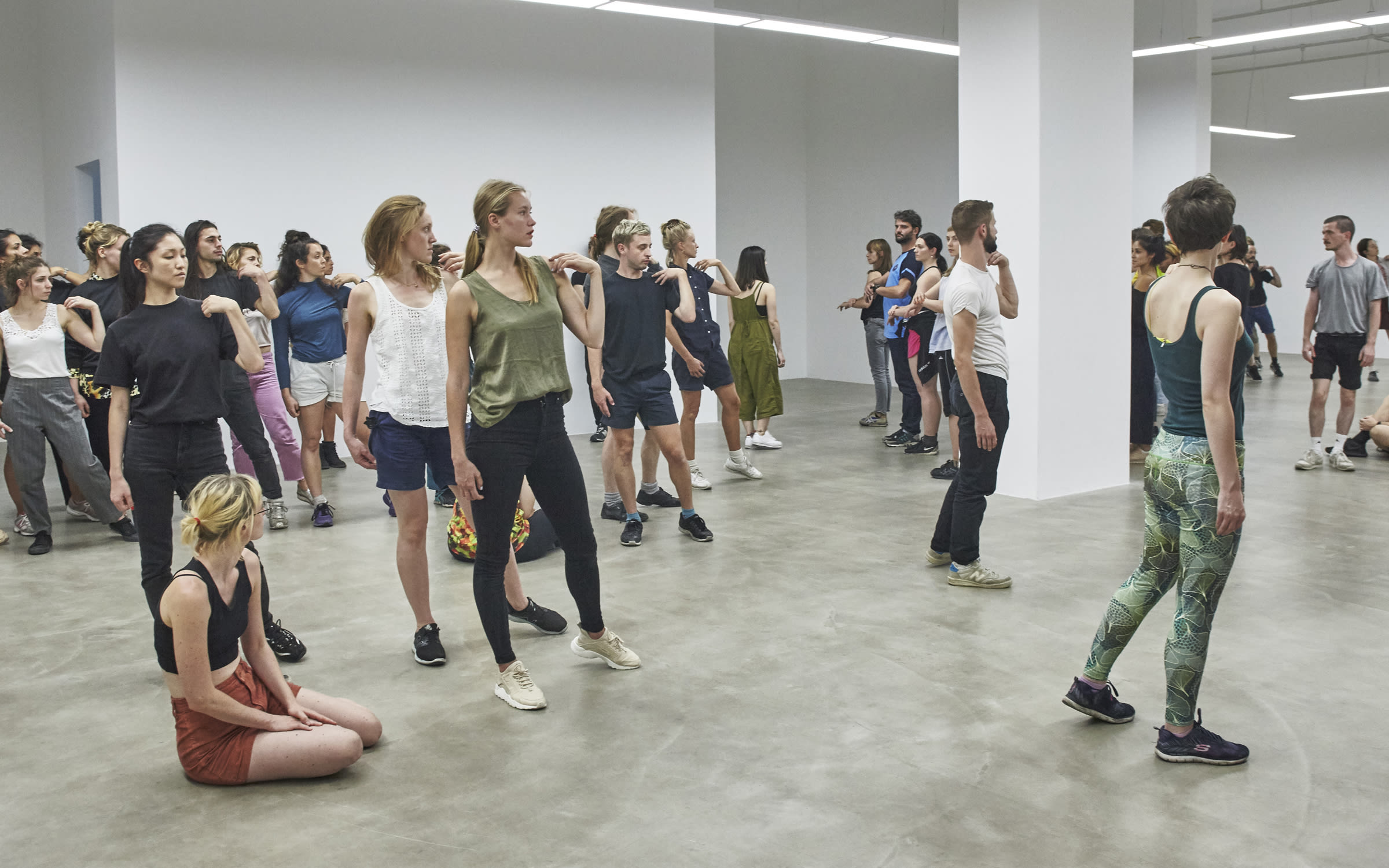
Throughout the piece, performers move through the space, both individually and in constellations. Following a set of pre-instructions from Pirici, and the rehearsed movements of the other performers, they choose which references to embody, so that the project is both choreographed and spontaneous. The list of references thus becomes a set of encoded messages – like the ones on the Golden Records – decrypted by the performers, who actualize them and spatialize the complex connections between them, their live presence including the public in an aggregate of meanings.
Below are some of the references featured in Pirici’s moving time capsule, grouped together in loose categories representing visual and conceptual vocabularies rather than thematic clusters. Together, they form a possible Ark of things worth saving from our planet and offer a glimpse of the world as seen by the artist. They remind us of our own finitude as well as opening up possibilities and triggering our curiosity.
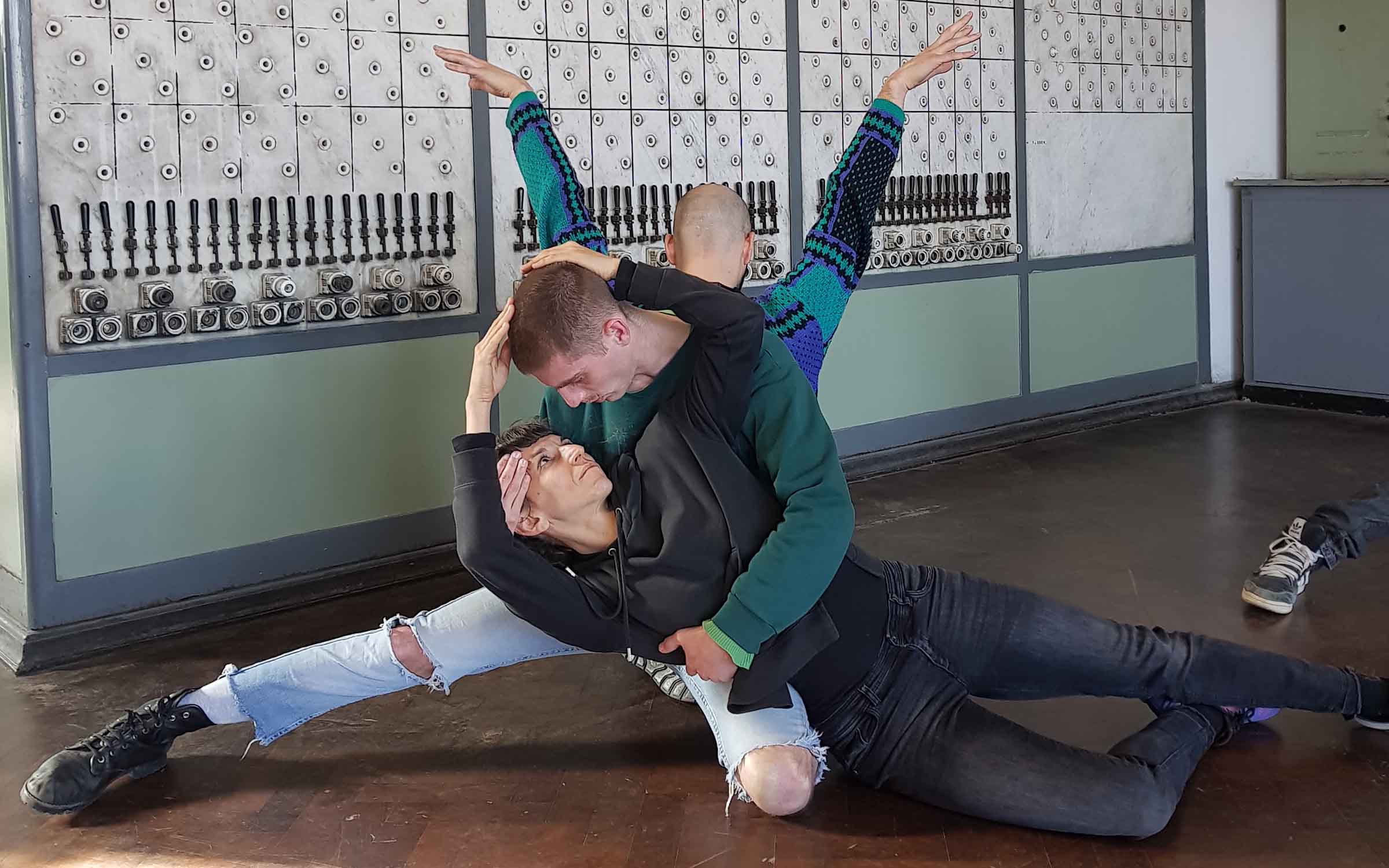
Songs, poems, and dances
Performers sing, recite or dance pieces: the fragment of a song on love and sadness by Maria Tănase, a singer banned by the fascist regime in 1940s Romania; an excerpt from I Pity the Garden by Iranian poet Forough Farrokhzad, both a lament on patriarchal life and a prophecy of climate change; a Bollywood song and dance celebrating the synchronicity of voices and movement; the eerie cyborg song of the Japanese animation Ghost in the Shell; and Gil Scott-Heron’s 1970 Whitey on the Moon, a poem-song criticizing America’s spending on space exploration while poverty and racism remain ingrained in its society. The multitude of languages, tonalities, and movements spark reactions ranging from deep joy to outrage, as the power of verse and rhythm converges with that of political rhetoric, testimonies of frailty, or futurist aesthetics. The culmination is Depeche Mode’s Enjoy the Silence, reduced almost to abstraction and accompanying the aggregation of all performers’ bodies in a corner of the space – a monstrous and tender collective form which can reconfigure endlessly and inspires possibilities of post-verbal communication and unity.
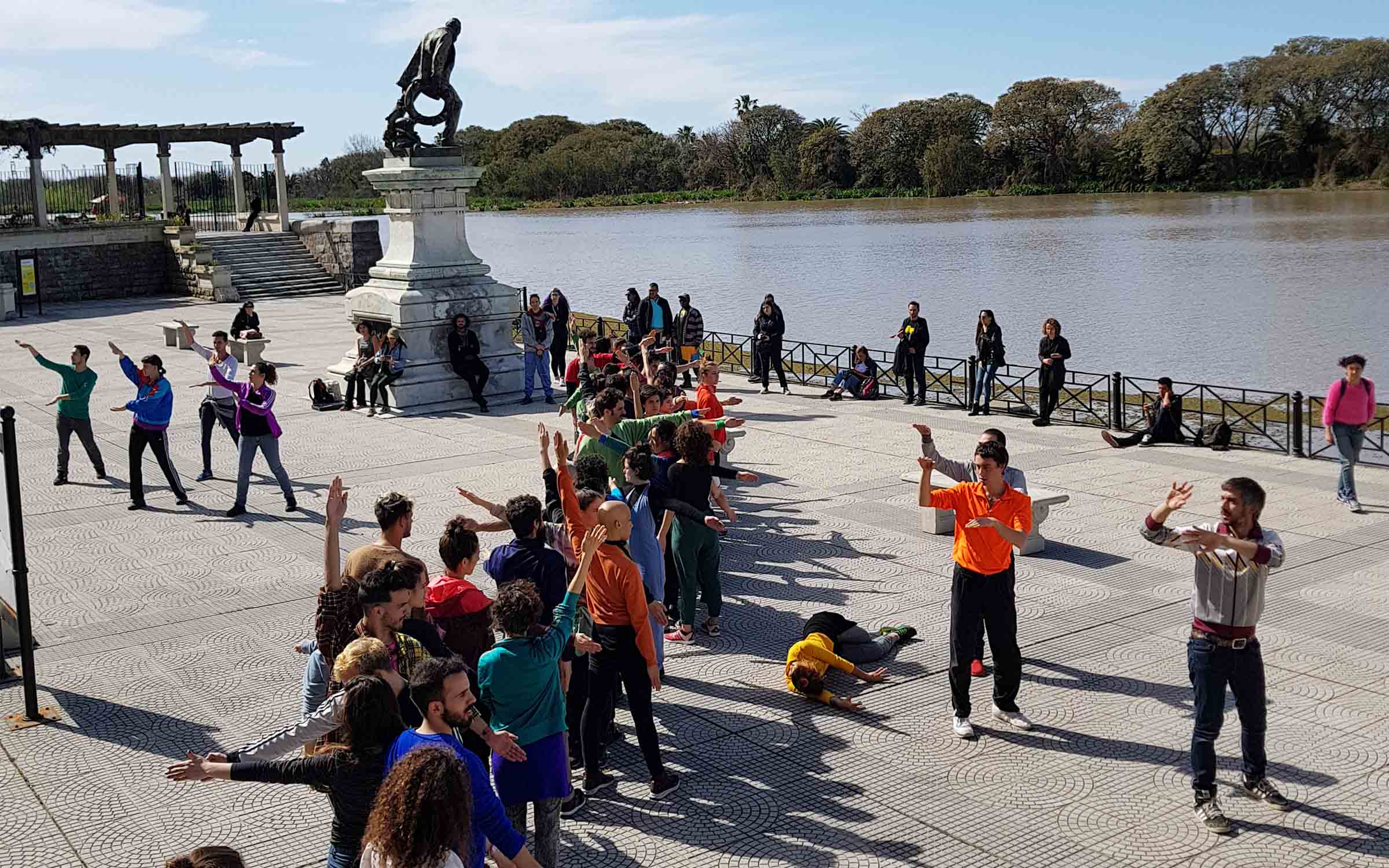
Birdsong, sound of waves
Now extinct, the huia was a New Zealand bird whose name, the Maori for ‘where are you?’, refers to its loud distress call – known today only through human imitations passed down through generations. Performers whistling the sound of the huia bird are thus re-enacting a human sound, reminding us that any attempt to salvage life on Earth will inevitably represent only humans’ version of life on Earth. Aggregate’s use of human bodies to record and remember the totality of the planet’s life is also an indication of a future in which mankind will have destroyed all the ecosystems it once tried to catalog. For many inhabitants of urban deserts this is already the reality, their daily lives cut off from a natural realm now evoked through artificial renderings. The sound of ocean waves, performed in Pirici’s work, resembles the sound of data storage rooms. Both are part of an aesthetic of the sublime in which technology is aimed at creating the perfect simulation of the real world.
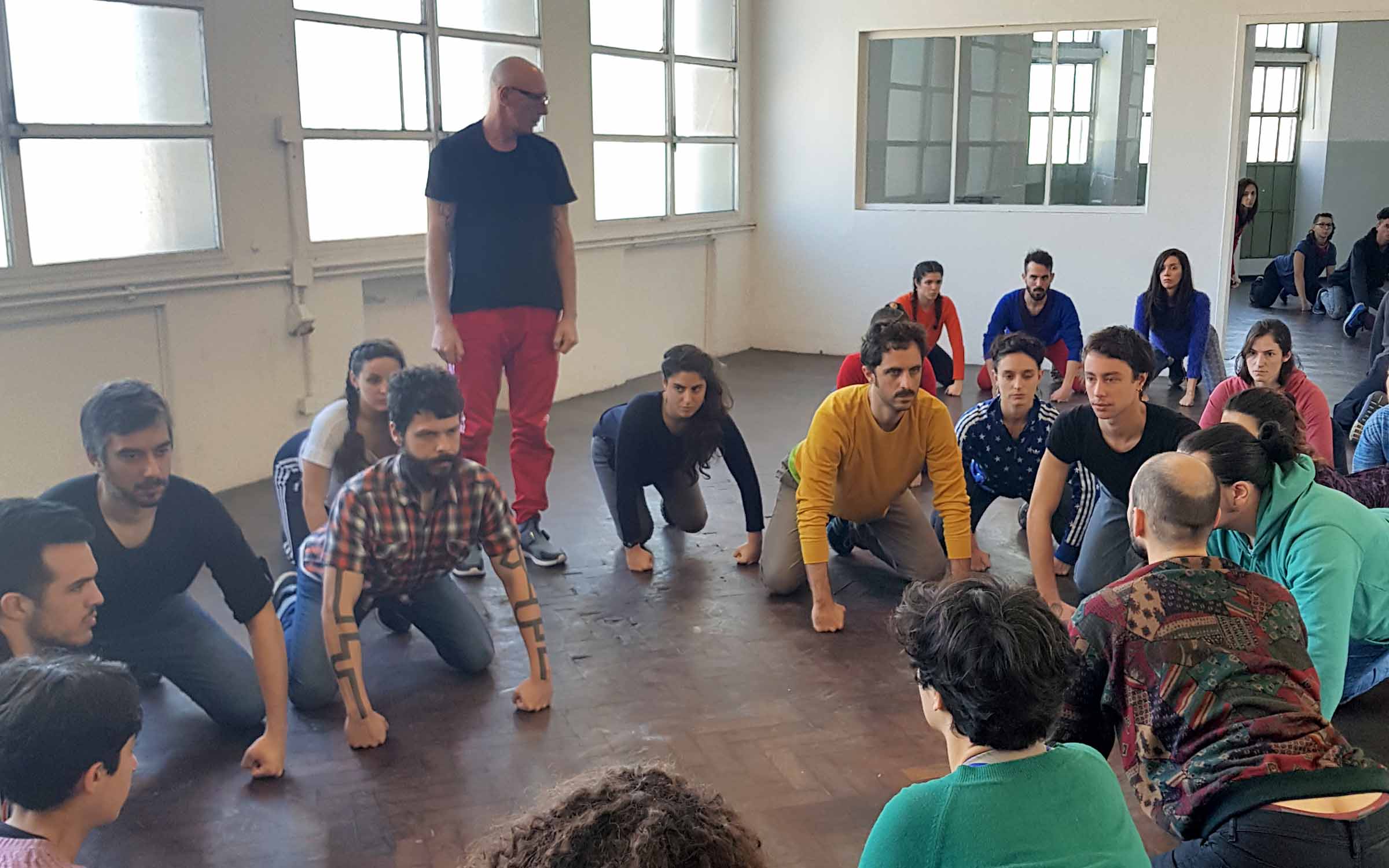
Eel colonies, ancient trees, alien-looking plants, and crystal caves
The movements and actions of larger groups of people can often evoke animal species. In Aggregate, however, beside easily recognizable postures such as those of antelopes, tigers, and gorillas, performers embody less familiar species and even minerals, which pre-date human life and have survived millennia of changes. We see performers almost creating electric waves in the space as they reproduce the collective undulations of a colony of eels; we see their bodies twisted around each other, creating the mental image of bristlecone pines, the oldest trees in the world, their locations kept secret by scientists for protection. Welwitschia mirabilis, a remnant of extremely ancient flora which survives today only in the Namib desert, is included in the selection, as are giant selenite crystals from a cave in Naica, Mexico, whose formation attests to the forces in deep geological strata. Recreating the shapes of such species and structures using the human form reminds us of their strangeness and unique beauty.
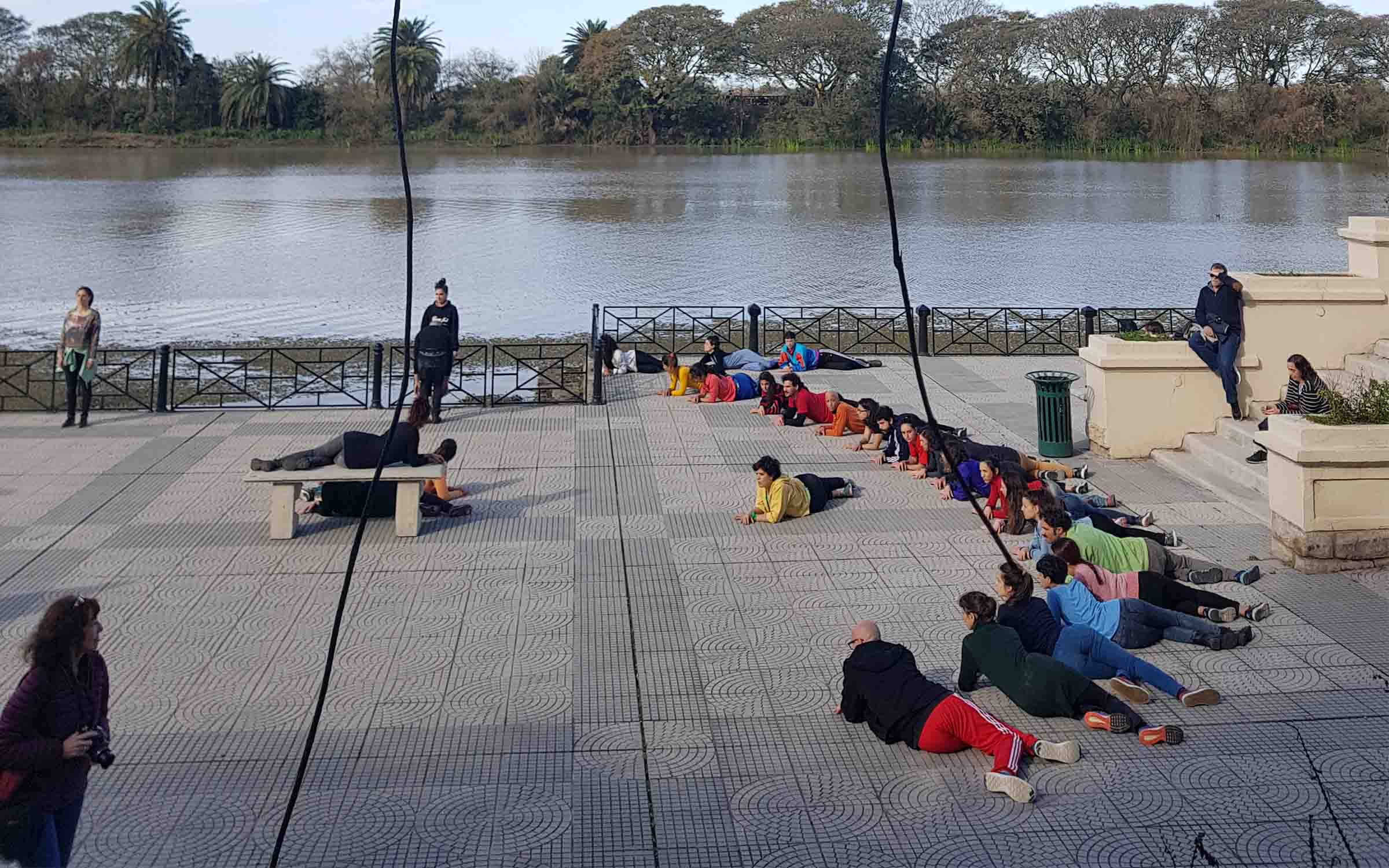
Revolutionary language
The Occupy movement will be remembered for its human megaphones and the hand gestures it used to facilitate wide participation in public debates. A history of struggles and protests – abridged to the powerful use of hands up, hands down, or crossed fists – is evoked in the space of Aggregate like a fresh breeze, punctuating the work’s melancholic references to the planet with the urgency of collective action. In a play devised by Pirici for this work, the performers call out each other’s names, which resound loudly in the space. They could belong to several people at once: performers or visitors, strangers or friends. To call someone’s name is to recognize it; to see others waving is to acknowledge a collective presence. The personal is political – as long as it is not alone.
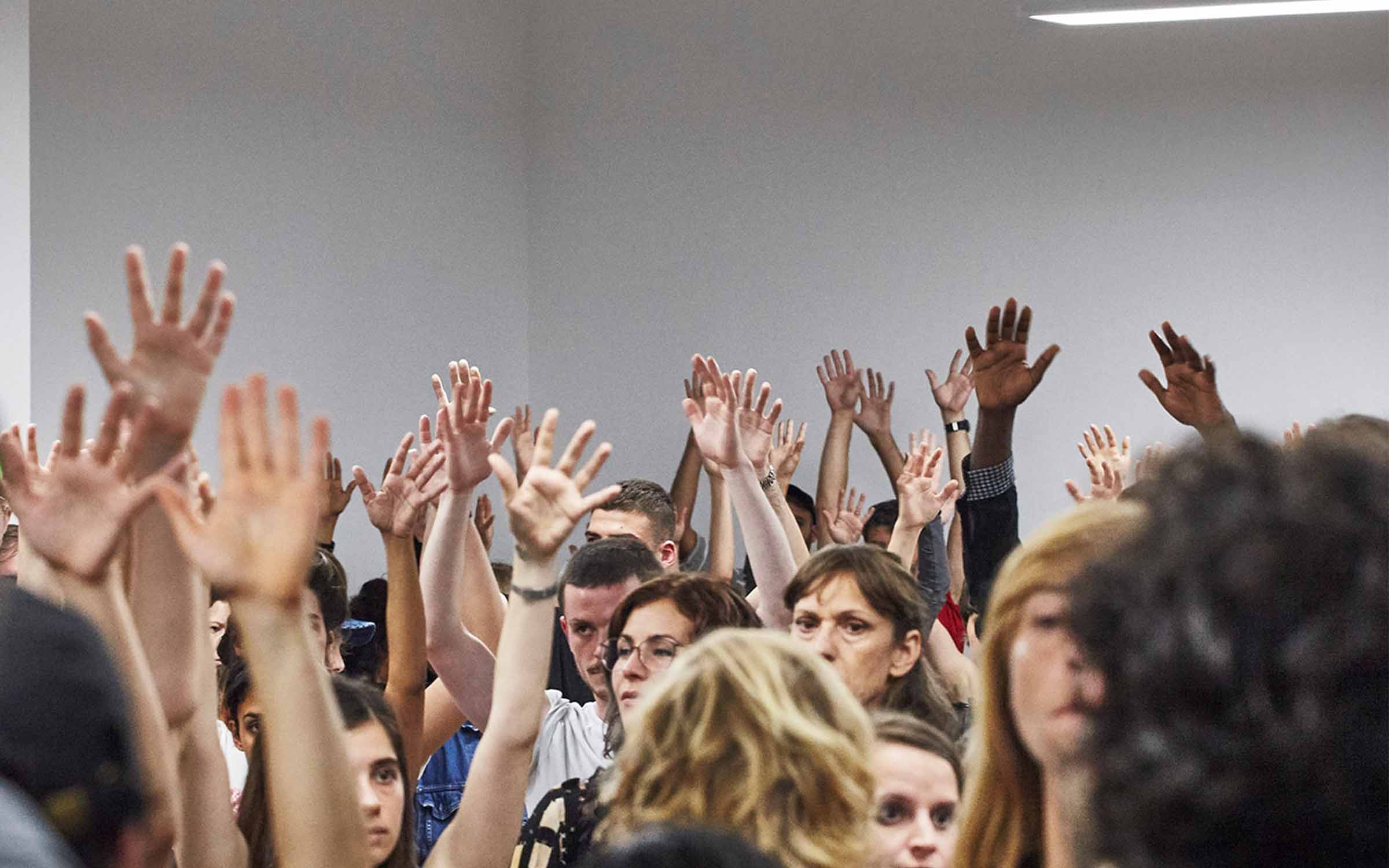
Works of art
In a life after people, works of art remain for centuries, lonely treasures commemorating the ideals and torments of the past. Art history is itself a selective memory, in which too often we only see what a privileged few elected to show us. Carved marble, oils on canvas, styles and schools; what stories can they tell if no one can read them? For Aggregate, Alexandra Pirici has chosen artworks by iconic figures such as Constantin Brancusi and Antonio Canova – but also by artists unrecognized in their lifetime, such as Camille Claudel. She has chosen da Vinci’s Mona Lisa, but also Wifredo Lam’s Lisa Mona (1950), its Cubist and Surrealist aesthetics imbued with Afro-Cuban spirit. With Aggregate, Pirici invites us to challenge our comfortable positions of contemplation and to distribute our attention to multiple narratives at once. As we follow the performers, we acknowledge our responsibility in choosing what is remembered.
Raluca Voinea is curator and art critic, based in Bucharest, Romania. She is co-director of tranzit.ro Association since 2012 and co-editor of IDEA arts + society magazine since 2008. She co-authored with Alexandra Pirici the Manifesto for the Gynecene in 2015.

